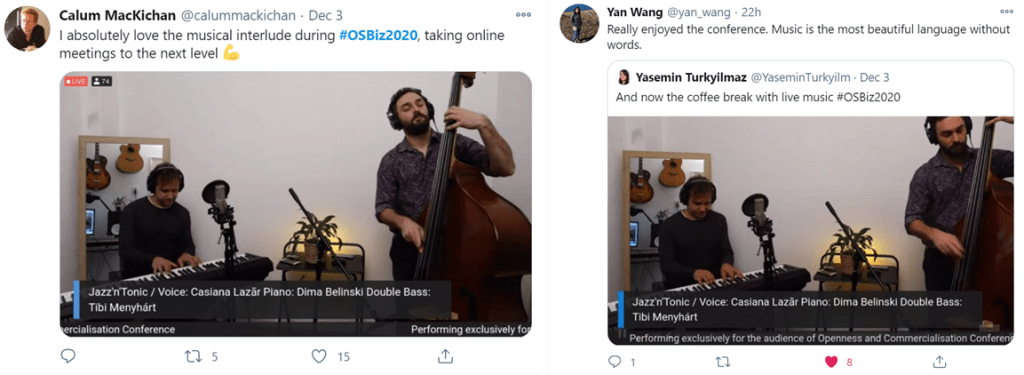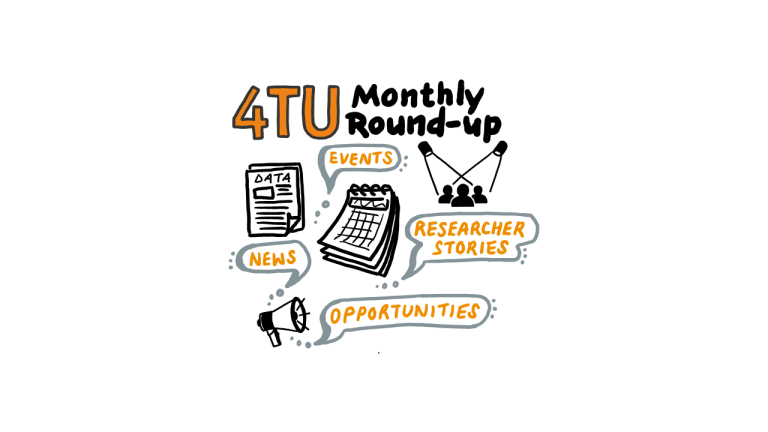Openness and Commercialisation – How the two can go together

#OsBiz2020 Quote of the event:
“Science is like a parachute – if it’s not open, it’s not gonna help you.”

On 3rd and 4th of December, around 200 delegates came together to explore the interface between academia and industry. The event, hosted by CESAER and others, was packed with inspiring keynote and lightning talks, Q&As, breakouts and panel discussions. Here are 10 take home messages from the event…
1. FAIR does not always mean ‘Open’, ‘Free’ or ‘Trustworthy’.
Karel Luyben, Chair of the Executive Board of the European Open Science Cloud

2. Knowledge valorisation is ‘the process of creating value from knowledge, and turning research results into sustainable solutions for economic value and societal benefit’.
Veronica Beneitez-Pinero, Valorisation Policies & IPR, Directorate-General for Research and Innovation, European Commission.

3. Open Science can help to foster university-industry collaboration. It is possible to share data whilst remaining compliant with legislation.
Marie Louise Conradsen, Head Open Science at Aarhus University, Denmark.

4. Intellectual property and R&D agreements have to be managed from the beginning of a project to avoid conflict of interest.
Juan Luis Rodrigues, IP & Innovation manager, RTDS Group: ‘IP Management in EU’s R&D framework – eg. Horizon 2020.’

5. The COVID-19 Data Analysis Pipeline demonstrates how academia and industry can come together to analyse large, real-time, non-distributable (sensitive) data and make evidence-based recommendations.
Allan Hanbury, Professor of Data Intelligence at TU Wien.

6. The statement ‘As open as possible; as closed as necessary‘ is a good first step. But, it doesn’t provide the detailed guidance and methods required to build trustworthy, contractual partnerships between academia and industry, whilst balancing the FAIR principles.
Panel discussion: Sophie Bailes (Director Digital Strategy of AstraZeneca), Shalini Kurapati (Co-Founder & CEO of Clearbox AI Solutions), Norbert Lütke-Entrup (Head of Corporate Technology & Innovation Management of Siemens) and Laura MacDonald (Chief Executive of Association of European Science and Technology Transfer Professionals).

7. DIY, open source, 3D-printable Robot, Otto, can be used for more efficient education in programming, AI, engineering and design!.. Super cool! 😉
Camilo Parra Palacio, Product Design Engineer, Otto DIY.

8. Collaboration between scientists and pharmaceutical companies advances innovation, translation and commercialisation of high-quality tools for societal and economic good.
Chas Bountra, University of Oxford & Structural Genomics Consortium.

9. Communication, communication, communication!
We MUST spread the word and showcase what Open Science can do around the world.
Karina Angelieva, Deputy Minister of Education and Science of Bulgaria.
“We are on the right track, but we still have a lot of work to do to implement Open Science practice in our universities and corporate organisations. Only in 2015, have we [the ministers] started talking about [FAIR] data. Now, we need definitions, polices, best practices, and funding to engage with researchers, develop necessary skills and embed data stewards. This event has shown that we have to share our knowledge, and invest in new ways to close the ‘innovation gap’ that exists and bring academia and industry even closer together.”

… 10. Enjoy some Jazz ‘n’ Tonic on your break!
A musical interlude kept us entertained throughout the event 🙂


And, finally… Thank you to the event organisers for a fantastic and diverse programme!

Written by Connie Clare (4TU.ResearchData)
Cover image illustrated by Connie Clare (4TU.ResearchData)




